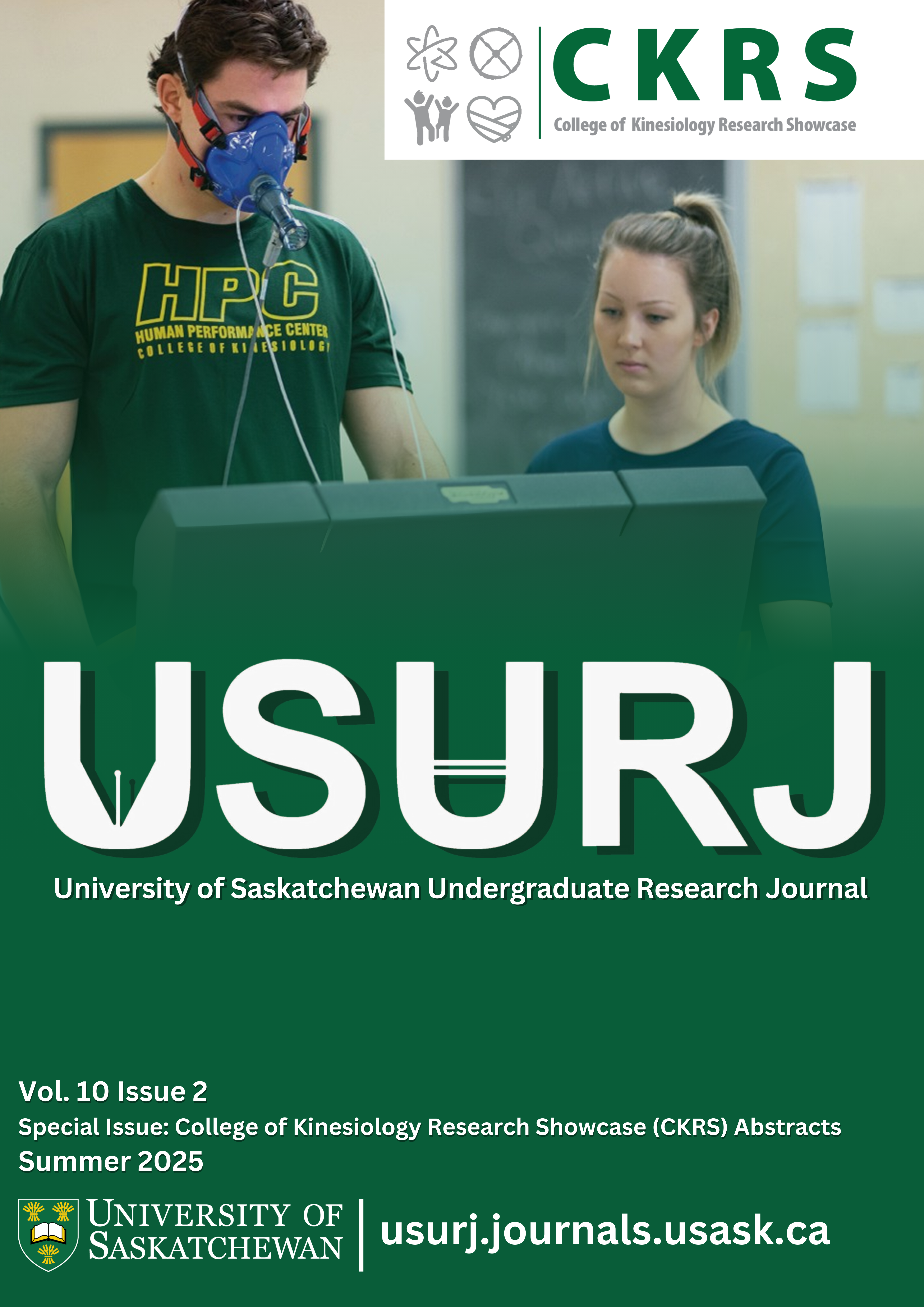The Refinement of a Previously Tested Concussion Protocol to Improve Its Clinical Utility
Main Article Content
Abstract
College of Kinesiology Research Theme: Human Performance
Background: Concussions are a complex pathophysiological process that can affect balance control, emphasizing the importance of measuring balance during concussion rehabilitation. Previous research evaluated the feasibility of a balance assessment protocol comprised of 24 standing tasks (e.g., one/two legs, eyes open/closed, on/off foam, with/without a figure 8 head movement, with/without a reaction time task). Fifteen of the 24 tasks were deemed feasible; however, the reliability, clinical implementation, and clinical utility of those tasks are unknown. This research examined the reliability of those 15 tasks, gathered clinician insights, and evaluated the clinical utility to develop a refined balance assessment protocol for people undergoing concussion rehabilitation. We hypothesized that the clinical utility index (CUI) would increase after our refinements.
Methods: Participants completed the standing balance tasks while standing on force plates (VALD Force Decks) to measure Centre of Pressure (COP) movement. Reliability of the COP data for participants without a history of concussion who completed the tasks twice 2-20 days apart was examined using Intraclass correlation coefficients (ICCs) for normally distributed data and Lin’s Concordance Coefficient (Rc) for non-normally distributed data (α =.05). Tasks with ≥ moderate reliability were compared between participants with and without a history of concussion using independent t-tests (α =.05). We shared results with four practicing clinicians (physiotherapists at a local clinic) to gather their clinical input and determine which tasks would be clinically useful. Clinical utility was calculated for the original and refined protocols.
Results: Six of the 15 feasible tasks had significant (p<.05), moderate-good reliability, including quiet standing eyes closed, quiet standing single leg, quiet standing single leg eyes closed, figure 8 single leg, figure 8 on foam single leg, and a lower extremity reaction time test. The quiet standing eyes closed and quiet standing single leg tasks differentiated between groups with and without a history of concussion. Clinicians chose the quiet standing eyes closed, figure 8 single leg, and lower extremity reaction time tasks as tasks they could incorporate into their current concussion rehabilitation protocol. The CUI changed from 1 (original protocol) to 5 (refined protocol).
Discussion: Using the previously established feasibility results and calculated reliability results changed the number of tasks from 15 to 3, which increased the CUI and represents a more clinically useful protocol. The feasibility and reliability results allowed clinicians insight into which tests are best to implement into their current protocol. The quiet standing eyes closed task serves as a simple baseline test, while the figure 8 single leg task incorporates vestibular activation, and the lower extremity reaction time task adds a cognitive challenge to balance. Future research could implement these three tasks in people undergoing concussion rehabilitation to determine if they are beneficial in detecting changes in balance and for clinical decision-making.
Downloads
Article Details
Section
Articles: USURJ’s current Publication Agreements apply a Creative Commons Attribution-NonCommercial License (CC-BY-NC) by default. The CC BY-NC license lets others remix, tweak, and build upon work non-commercially. The author(s) can choose a different CC license, as outlined in https://creativecommons.org/about/cclicenses/. Please see the PDF for each article to determine what license is applied to that article. Author(s) can also request to reserve all copyright (All Rights Reserved). If there is no indication for articles published before September 2020, assume the author retains all rights beyond those necessary for publication by USURJ. All articles published after September 2020 will apply one of the aforementioned CC licenses. See the Publication Agreement under the Submission Preparation Checklist or Author Guidelines for more information. Artwork: All copyright for the original artwork remains with the artist unless they wish to apply a Creative Commons (CC) license to the artwork. Please see the PDF for each artwork to determine what license is applied to that artwork.
